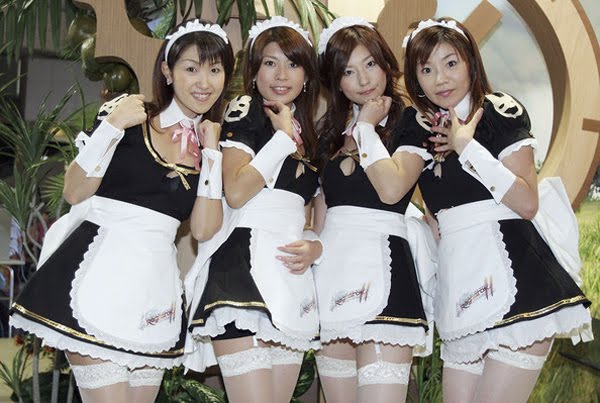Japan’s ‘Moe’ obsession: the purest form of love, or creepy fetishization of young girls? [View all]

by Tim Hornyak
Special To The Japan Times
Anyone who has visited Tokyo’s Akihabara district in the past decade will have run into countless images of cartoonish girls: in posters, in figurines and in the form of real women dressed up as French maids.
The cute cartoon girls, or bishōjo, are visual hieroglyphics in the language of otaku (obsessive) desire. Their dewy saucer-like Bambi eyes seem to encode an inscrutable message that can be bewildering to the uninitiated. Why the endless repetition of this waif? Is there some pre-”Sailor Moon” archetype they are trying to recapture? What does it all mean?
Otaku scholar Patrick W. Galbraith has tried to decipher the semiotics by focusing on one keyword in the otaku lexicon: moe (for some reason written with a French accent over the “e” in his book, unlike “anime”). It’s from the Japanese verb moeru, meaning either to burst into bud or to burn, depending on the way it’s written. In geek-speak, it signifies the emotional attachment that otaku feel for their favorite characters. Galbraith’s “The Moe Manifesto” is a collection of 19 interviews with manga and anime artists and producers that aims to better understand what motivates otaku.
I confess that although I enjoy quality anime, I’m no fan of moe. To me it is shorthand for moeru gomi (burnable trash). But I read this book in hopes of gaining insight into what would make grown men — and many if not most otaku are such — obsess over cartoon girls. Is it a sexual fetish? A Peter Pan complex? Or some other unfulfilled desire?
http://www.japantimes.co.jp/culture/2014/07/26/books/book-reviews/japans-moe-obsession-purest-form-love-creepy-fetishization-young-girls/#.U9Vy5kDNvMo
